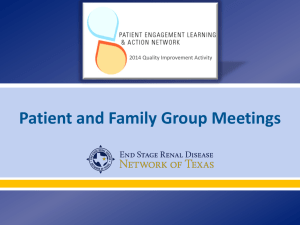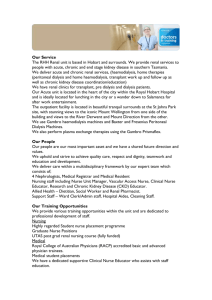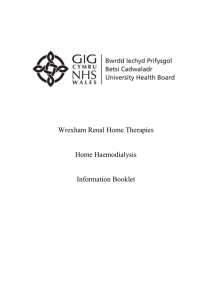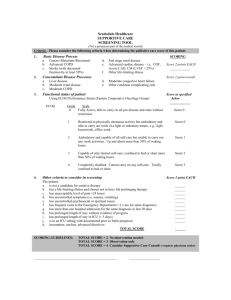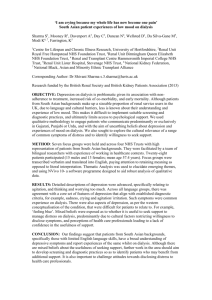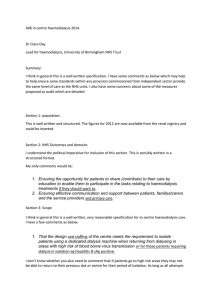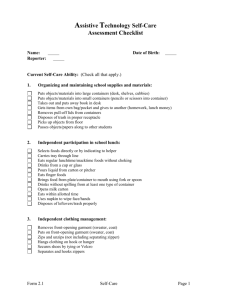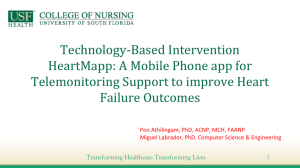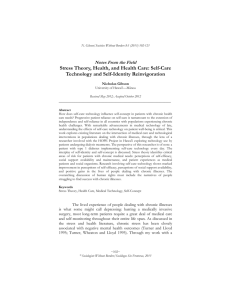Dialysis - promoting self-care and home therapies
advertisement
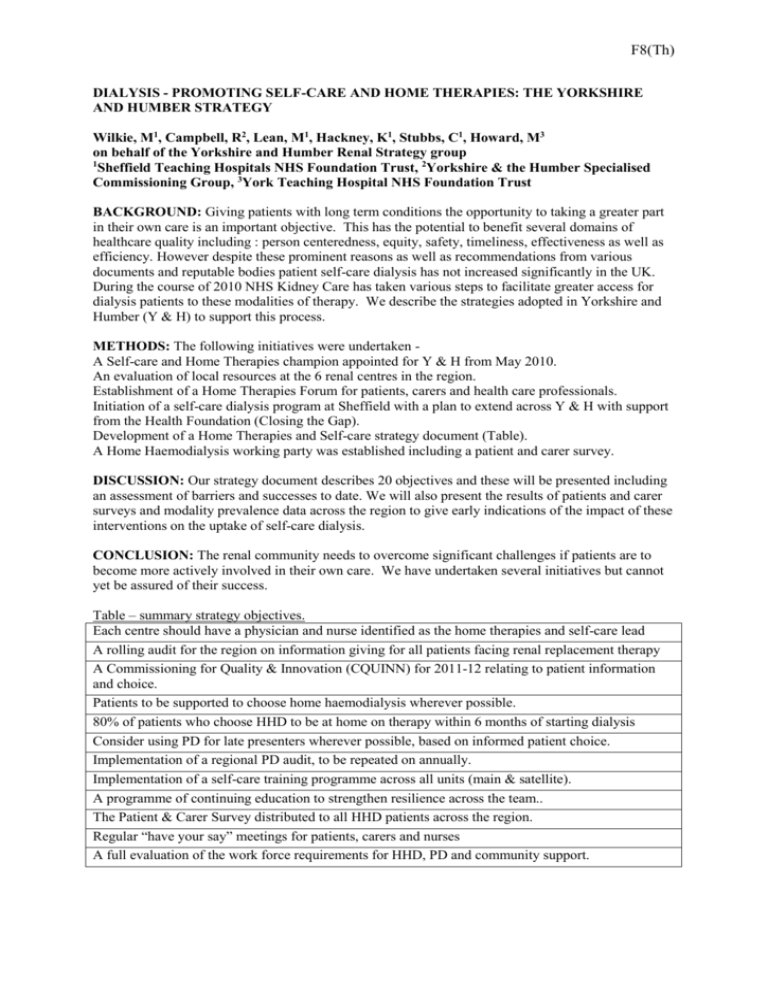
F8(Th) DIALYSIS - PROMOTING SELF-CARE AND HOME THERAPIES: THE YORKSHIRE AND HUMBER STRATEGY Wilkie, M1, Campbell, R2, Lean, M1, Hackney, K1, Stubbs, C1, Howard, M3 on behalf of the Yorkshire and Humber Renal Strategy group 1 Sheffield Teaching Hospitals NHS Foundation Trust, 2Yorkshire & the Humber Specialised Commissioning Group, 3York Teaching Hospital NHS Foundation Trust BACKGROUND: Giving patients with long term conditions the opportunity to taking a greater part in their own care is an important objective. This has the potential to benefit several domains of healthcare quality including : person centeredness, equity, safety, timeliness, effectiveness as well as efficiency. However despite these prominent reasons as well as recommendations from various documents and reputable bodies patient self-care dialysis has not increased significantly in the UK. During the course of 2010 NHS Kidney Care has taken various steps to facilitate greater access for dialysis patients to these modalities of therapy. We describe the strategies adopted in Yorkshire and Humber (Y & H) to support this process. METHODS: The following initiatives were undertaken A Self-care and Home Therapies champion appointed for Y & H from May 2010. An evaluation of local resources at the 6 renal centres in the region. Establishment of a Home Therapies Forum for patients, carers and health care professionals. Initiation of a self-care dialysis program at Sheffield with a plan to extend across Y & H with support from the Health Foundation (Closing the Gap). Development of a Home Therapies and Self-care strategy document (Table). A Home Haemodialysis working party was established including a patient and carer survey. DISCUSSION: Our strategy document describes 20 objectives and these will be presented including an assessment of barriers and successes to date. We will also present the results of patients and carer surveys and modality prevalence data across the region to give early indications of the impact of these interventions on the uptake of self-care dialysis. CONCLUSION: The renal community needs to overcome significant challenges if patients are to become more actively involved in their own care. We have undertaken several initiatives but cannot yet be assured of their success. Table – summary strategy objectives. Each centre should have a physician and nurse identified as the home therapies and self-care lead A rolling audit for the region on information giving for all patients facing renal replacement therapy A Commissioning for Quality & Innovation (CQUINN) for 2011-12 relating to patient information and choice. Patients to be supported to choose home haemodialysis wherever possible. 80% of patients who choose HHD to be at home on therapy within 6 months of starting dialysis Consider using PD for late presenters wherever possible, based on informed patient choice. Implementation of a regional PD audit, to be repeated on annually. Implementation of a self-care training programme across all units (main & satellite). A programme of continuing education to strengthen resilience across the team.. The Patient & Carer Survey distributed to all HHD patients across the region. Regular “have your say” meetings for patients, carers and nurses A full evaluation of the work force requirements for HHD, PD and community support.

